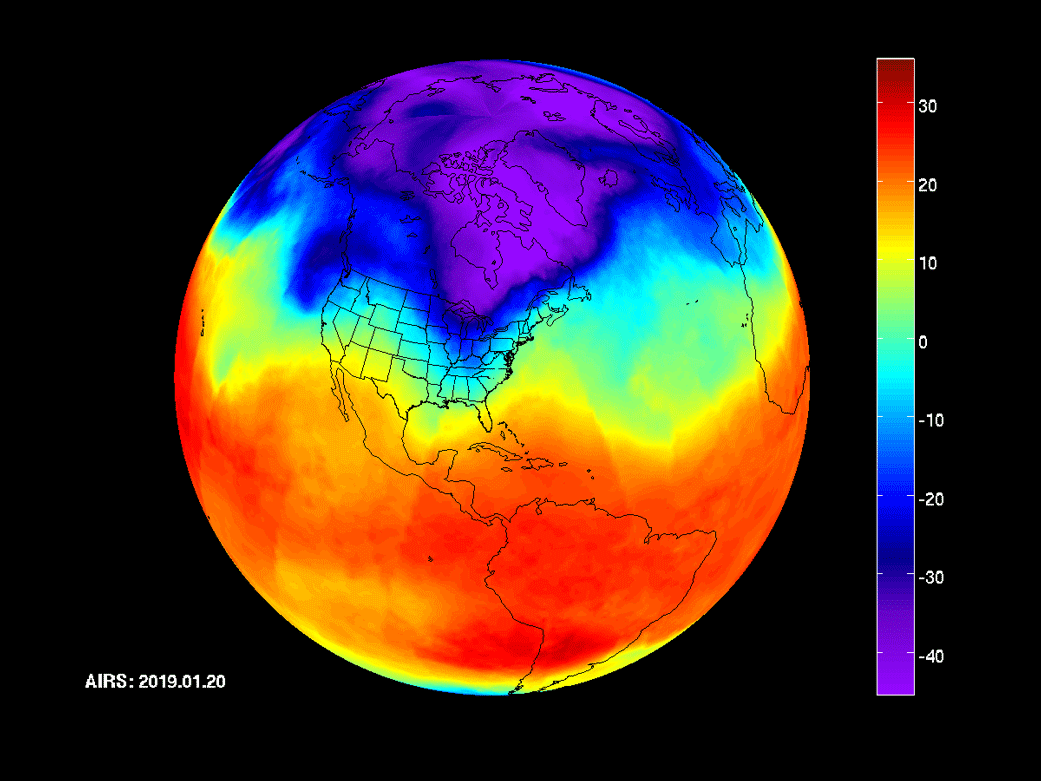Will the polar vortex affect summer pest pressure?
With the brutally cold temperatures brought by the polar vortex, it can be hard to imagine how insects could survive until spring. They have tiny bodies without thick insulating coats of fur, feathers, or blubber, so how can they survive the freezing months? And how will the extreme cold brought by this year’s polar vortex affect them?
Mammals, including us, and birds are endotherms; we burn calories from our food to produce body heat, which we use to maintain a remarkably constant body temperature. If our core body temperature falls even a few degrees, we enter a potentially life-threatening state of hypothermia. On the other hand, insects are ectotherms; for the most part, their body temperature is determined by the environment around them. This means that they can tolerate broad swings in core body temperature, though extremes of temperature can still pose problems. Freezing is particularly problematic; the typical consequence of freezing an animal is that the ice crystals that form in the cells of its body rupture the cell membranes, effectively turning the animal’s flesh into a leaky mess. However, insects have several tricks to prevent this gruesome fate. Some dehydrate their bodies as winter temperatures set in; ice crystals cannot hurt them if there is no water to turn to ice. Others saturate their body fluids with sugars or antifreeze compounds that lower the freezing point of their body fluids, enabling them to survive below the normal freezing point of water. Some go a step further, and produce cryoprotectant proteins that help regulate the formation of ice crystals so that they can freeze without their cells hemorrhaging. In many cases, these internal adaptations are paired with sheltering behavior in autumn where insects invade buildings or dig into the ground so that they will not experience the worst of winter.
The National Pest Management Association issued a press release suggesting that the bitter cold of the polar vortex could drastically reduce populations of pest insects, citing an experiment from Virginia Tech that showed a 95% mortality rate for brown marmorated stink bugs during polar vortex cold snaps. Upon further investigation, the “experiment” consisted of a professor storing stink bugs in ventilated buckets filled with foam insulation tubes to use for research over the summer. Many insects need a winter cold exposure to properly go through their life cycles, so this method of rearing the bugs is likely to be more of an artifact of the rearing protocol than a major part of any particular experiment, and the observation that the bugs experienced a 95% mortality over a polar vortex in 2014 is anecdotal, not experimentally determined. Before we jump to the conclusion that the polar vortex will solve our stink bug problems, we need more information: what is the baseline mortality in a more typical winter? Does the cold affect wild bugs that might be better protected from the cold in the same way as it affects bugs in buckets? Does the cold have a stronger affect on the stink bugs or on the bugs’ natural enemies? Even if the bug population is reduced, will that reduction last beyond a generation or two as the bugs repopulate? And how will these effects translate to other types of insects, whether pest, neutral, or beneficial?
We should also consider all the conditions that surrounded the polar vortex. It occurred in mid-winter, when virtually all insects would be in full overwintering mode and as protected from the cold as they’ll ever get. At least here in Superior WI, there was an appreciable accumulation of snow during the vortex, and snow is an excellent insulator that could protect overwintering insects. Also, winter is far from over; a mild spring may offset any insect kills brought on by the vortex, while a spring that alternates between warm and biting cold could freeze insects as they emerge from dormancy and regain their frost susceptibility. Finally, we should address the big picture of climate change, which is likely to have complex effects on local weather patterns and pest pressures (some reviews here and here). We should also keep in mind that many household pests, such as German cockroaches or bed bugs, never set foot outside and are unlikely to be significantly affected by weather or climate. So will the polar vortex reduce pest pressure this summer? Maybe, but results are likely to vary from pest to pest and place to place.
Featured image photo credit: NASA/JPL-Caltech AIRS Project






